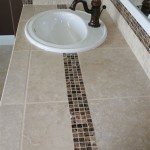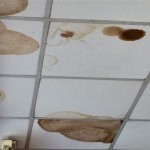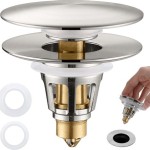Bathroom Vanity Sealant: A Comprehensive Guide
Bathroom vanity sealant plays a crucial role in maintaining the integrity and longevity of a bathroom. It creates a watertight barrier between the vanity top, backsplash, and wall, preventing water damage and mold growth. Choosing the right sealant and applying it correctly is essential for achieving a professional-looking and long-lasting seal.
Types of Bathroom Vanity Sealant
Several types of sealant are suitable for bathroom vanity applications, each with its own advantages and disadvantages:
- Silicone Sealant: Silicone is the most common type of bathroom sealant due to its excellent water resistance, flexibility, and durability. It's available in various colors to match different vanity tops and is generally mildew-resistant.
- Caulk: Caulk is generally more affordable than silicone but less durable and flexible. It's typically used for less demanding applications, such as filling small gaps between the vanity and the wall.
- Acrylic Latex Sealant: This type of sealant is easy to apply and clean up with water, but it's not as water-resistant as silicone and may require more frequent replacement.
- Polyurethane Sealant: Polyurethane offers excellent adhesion and water resistance and is often used for bonding different materials. It's more difficult to work with than silicone and requires proper ventilation during application.
Choosing the Right Sealant
Selecting the appropriate sealant depends on several factors:
- Location: Areas exposed to frequent water contact, such as around the sink and backsplash, require a highly water-resistant sealant like silicone.
- Material Compatibility: Ensure the sealant is compatible with the vanity top material (e.g., granite, laminate, marble) and the wall material.
- Appearance: Choose a sealant color that matches or complements the vanity and surrounding area.
- Flexibility: Opt for a flexible sealant, especially in areas prone to movement or temperature fluctuations.
Preparing the Surface
Proper surface preparation is crucial for achieving a strong and long-lasting seal:
- Cleaning: Thoroughly clean the surfaces to be sealed with a suitable cleaner and allow them to dry completely.
- Removing Old Sealant: Carefully remove any existing sealant using a utility knife or scraper. Be cautious not to damage the vanity top or wall.
- Taping: Apply painter's tape along the edges of the area to be sealed to create clean lines and prevent sealant from getting on unwanted surfaces.
Applying the Sealant
Applying the sealant correctly is essential for a professional finish:
- Cutting the Nozzle: Cut the nozzle of the sealant tube at a 45-degree angle to create a bead of the desired size.
- Application: Apply a continuous bead of sealant along the joint, ensuring even coverage and avoiding gaps.
- Smoothing: Use a wet finger or a sealant smoothing tool to smooth the bead and create a concave shape. This helps water run off the sealant and prevents accumulation.
- Removing Tape: Carefully remove the painter's tape while the sealant is still wet to prevent tearing or pulling.
- Curing Time: Allow the sealant to cure completely according to the manufacturer's instructions before using the vanity.
Maintaining the Seal
Regular maintenance can prolong the life of the sealant and prevent issues:
- Cleaning: Regularly clean the sealant with a mild detergent and water to remove soap scum, mildew, and other debris.
- Inspection: Periodically inspect the sealant for signs of damage, such as cracks, gaps, or discoloration. Repair or replace any damaged sealant promptly.
- Avoid Harsh Chemicals: Avoid using harsh chemicals or abrasive cleaners on the sealant, as these can degrade its performance.
Common Problems and Solutions
Several issues can occur with bathroom vanity sealant:
- Mold and Mildew Growth: Ensure adequate ventilation in the bathroom and regularly clean the sealant to prevent mold and mildew growth. Consider using a mildew-resistant sealant.
- Cracking and Peeling: This can be caused by movement, temperature fluctuations, or improper application. Ensure proper surface preparation and use a flexible sealant.
- Discoloration: Exposure to certain chemicals or cleaning products can cause discoloration. Use gentle cleaners and avoid harsh chemicals.
Tools and Materials
Having the right tools and materials on hand makes the sealant application process smoother:
- Sealant Gun: A sealant gun provides better control and makes applying a consistent bead of sealant easier.
- Utility Knife: Used for cutting the sealant nozzle and removing old sealant.
- Scraper: Helps remove old sealant effectively.
- Painter's Tape: Creates clean lines and protects surrounding surfaces.
- Sealant Smoothing Tool (optional): Helps achieve a smooth and professional finish.
- Cleaner: Used for cleaning the surfaces before sealant application.
- Rags or Sponges: For cleaning and wiping up excess sealant

Should You Caulk Around A Bathroom Vanity Bathtubber

How To Seal Vanity Top Storables

Clear Caulk Sealants The Home Depot

Choosing The Best Caulk For Bathroom Sink Pep Up Home

Finish For A Bathroom Vanity The Wood Whisperer

Should You Caulk Around A Bathroom Vanity Bathtubber

How To Refinish Bathroom Vanity Top With Diy Resin Thediyplan

How To Clean Remove Reapply Caulk In Kitchens And Bathrooms

4 Ways To Fix A Gap Between Vanity And Wall

How To Caulk Bathroom Counter With Dap Remove Old Silicone Desolvit
Related Posts







